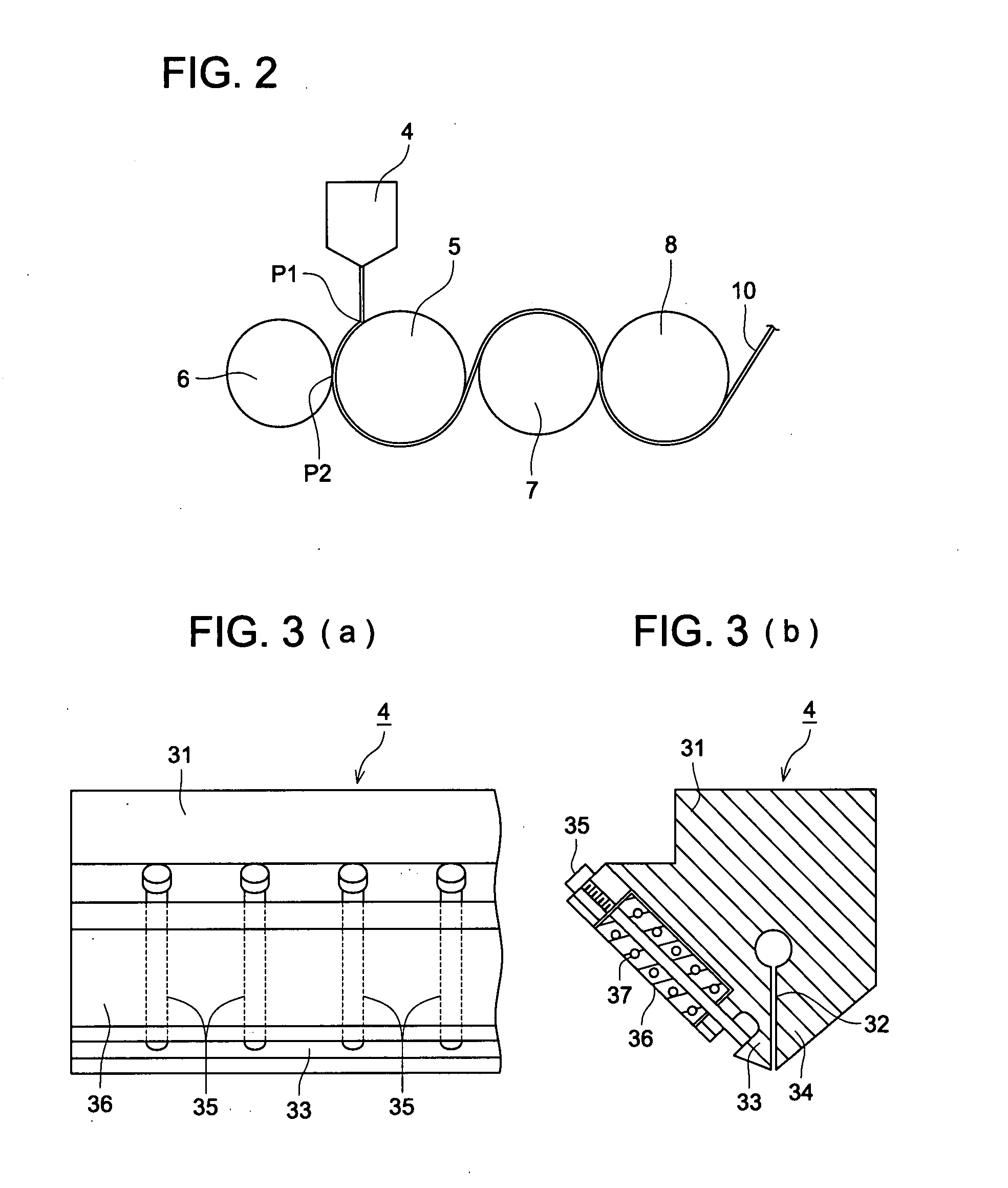Polarizer protective film, manufacturing method thereof, polarizing plate and liquid crystal display
a technology of protective film and cellulose ester, which is applied in the direction of polarizing elements, instruments, transportation and packaging, etc., can solve the problems of difficult to produce a large amount of cellulose ester film by a solution casting method, difficult to level the film fully, and high manufacturing cost, so as to reduce the variation of retardation values due to humidity change, reduce deformation defects, and stable
- Summary
- Abstract
- Description
- Claims
- Application Information
AI Technical Summary
Benefits of technology
Problems solved by technology
Method used
Image
Examples
synthesis example 1
Cellulose Ester
[0449]Referring to the method disclosed in example B of Japanese Translation of PCT International Application Publication No. 6-501040, three cellulose esters having the following acetyl substitution degrees and propionyl substitution degrees were synthesized by adjusting the adding amounts of propionic acid and acetic acid.
[0450]C-1: acetyl substitution degree 1.4, propionyl substitution degree 1.4, and total acyl substitution degree 2.8
[0451]C-2: acetyl substitution degree 1.5, propionyl substitution degree 1.3, and total acyl substitution degree 2.8
[0452]C-3: acetyl substitution degree 1.4, propionyl substitution degree 1.3, and total acyl substitution degree 2.7
[0453]The substitution degrees of thus obtained cellulose esters were calculated according to the method of ASTM-D817-96.
synthesis example 2
Synthesis of Plasticizer and Trimethylolpropane Tribenzoate (TMPTB)
[0454]A mixed solution of 45 weight parts of trimethylolpropane and 101 weight parts of triethylamine kept at 100° C. was titrated with 71 weight parts of benzoyl chloride over 30 minutes while stirring, and the resulting solution was further stirred for 30 minutes. The resulting mixture was cooled to room temperature after finishing the reaction and the precipitate was filtered. Then, the filtrate was washed by addition of ethyl acetate pure water; the organic phase was separated and ethyl acetate was removed by evaporation under reduced pressure; whereby 126 weight parts (yield of 85%) of white crystals were obtained. Herein, the molecular weight of this compound was 446.
synthesis example 3
Plasticizer, Compound Example 48
[0455]A mixed solution, comprising 36 weight parts of trimethylol propane, 107 weight parts of pyridine and 300 weight parts of ethyl acetate, kept at 10° C. was titrated with a solution, in which 250 weight parts of 3,4,5-trimethoxybenzoyl chloride were dissolved in 300 weight parts of ethyl acetate, over 30 minutes while stirring, followed by being heated to 80° C. and stirred for 5 hours. After finishing the reaction, the resulting mixture was cooled to room temperature and the precipitate was filtered. After the filtrate was washed by addition of 1 mol / L HCl aqueous solution, followed by being further washed by addition of 1% Na2CO3 aqueous solution, the organic phase was separated and the organic solvents were eliminated by evaporation under reduced pressure, whereby 153 weight parts (yield of 80%) of white crystals were prepared. Herein the molecular weight of this compound was 717.
PUM
| Property | Measurement | Unit |
|---|---|---|
| Percent by mass | aaaaa | aaaaa |
| Temperature | aaaaa | aaaaa |
| Temperature | aaaaa | aaaaa |
Abstract
Description
Claims
Application Information
 Login to View More
Login to View More - R&D
- Intellectual Property
- Life Sciences
- Materials
- Tech Scout
- Unparalleled Data Quality
- Higher Quality Content
- 60% Fewer Hallucinations
Browse by: Latest US Patents, China's latest patents, Technical Efficacy Thesaurus, Application Domain, Technology Topic, Popular Technical Reports.
© 2025 PatSnap. All rights reserved.Legal|Privacy policy|Modern Slavery Act Transparency Statement|Sitemap|About US| Contact US: help@patsnap.com



